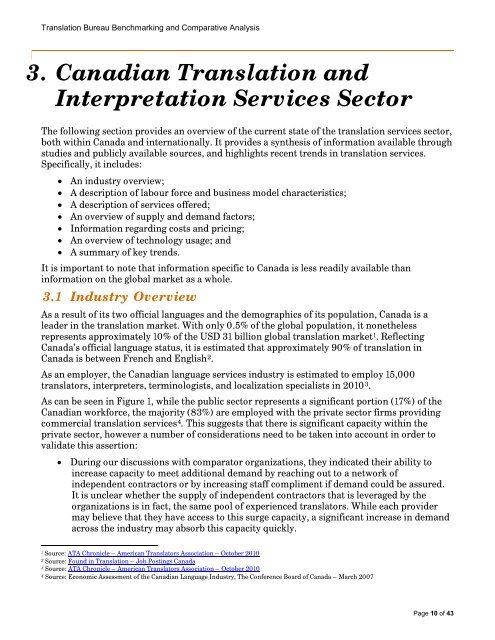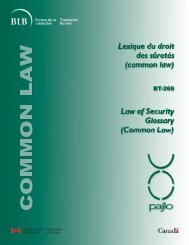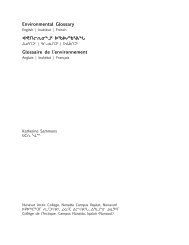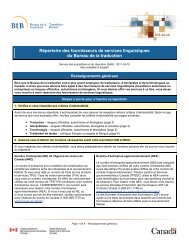Translation Bureau Benchmarking and Comparative Analysis - Final ...
Translation Bureau Benchmarking and Comparative Analysis - Final ...
Translation Bureau Benchmarking and Comparative Analysis - Final ...
Create successful ePaper yourself
Turn your PDF publications into a flip-book with our unique Google optimized e-Paper software.
<strong>Translation</strong> <strong>Bureau</strong> <strong>Benchmarking</strong> <strong>and</strong> <strong>Comparative</strong> <strong>Analysis</strong>3. Canadian <strong>Translation</strong> <strong>and</strong>Interpretation Services SectorThe following section provides an overview of the current state of the translation services sector,both within Canada <strong>and</strong> internationally. It provides a synthesis of information available throughstudies <strong>and</strong> publicly available sources, <strong>and</strong> highlights recent trends in translation services.Specifically, it includes:• An industry overview;• A description of labour force <strong>and</strong> business model characteristics;• A description of services offered;• An overview of supply <strong>and</strong> dem<strong>and</strong> factors;• Information regarding costs <strong>and</strong> pricing;• An overview of technology usage; <strong>and</strong>• A summary of key trends.It is important to note that information specific to Canada is less readily available thaninformation on the global market as a whole.3.1 Industry OverviewAs a result of its two official languages <strong>and</strong> the demographics of its population, Canada is aleader in the translation market. With only 0.5% of the global population, it nonethelessrepresents approximately 10% of the USD 31 billion global translation market 1 . ReflectingCanada’s official language status, it is estimated that approximately 90% of translation inCanada is between French <strong>and</strong> English 2 .As an employer, the Canadian language services industry is estimated to employ 15,000translators, interpreters, terminologists, <strong>and</strong> localization specialists in 2010 3 .As can be seen in Figure 1, while the public sector represents a significant portion (17%) of theCanadian workforce, the majority (83%) are employed with the private sector firms providingcommercial translation services 4 . This suggests that there is significant capacity within theprivate sector, however a number of considerations need to be taken into account in order tovalidate this assertion:• During our discussions with comparator organizations, they indicated their ability toincrease capacity to meet additional dem<strong>and</strong> by reaching out to a network ofindependent contractors or by increasing staff compliment if dem<strong>and</strong> could be assured.It is unclear whether the supply of independent contractors that is leveraged by theorganizations is in fact, the same pool of experienced translators. While each providermay believe that they have access to this surge capacity, a significant increase in dem<strong>and</strong>across the industry may absorb this capacity quickly.1Source: ATA Chronicle – American Translators Association – October 20102Source: Found in <strong>Translation</strong> – Job Postings Canada3Source: ATA Chronicle – American Translators Association – October 20104Source: Economic Assessment of the Canadian Language Industry, The Conference Board of Canada – March 2007Page 10 of 43
















